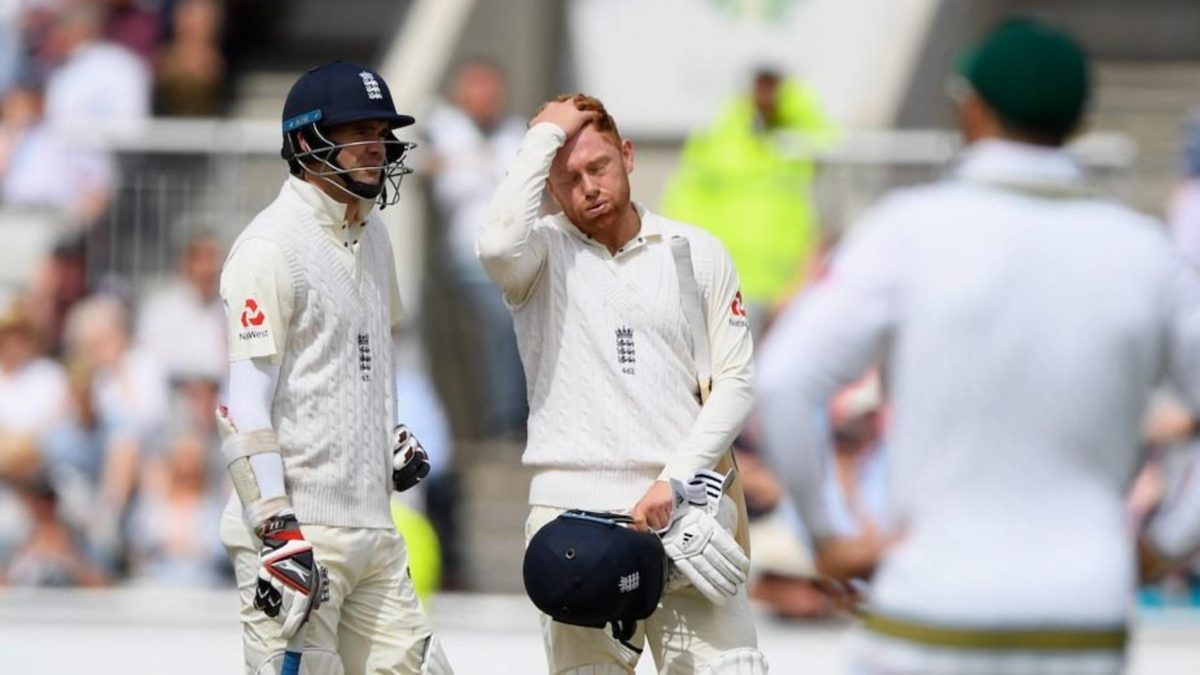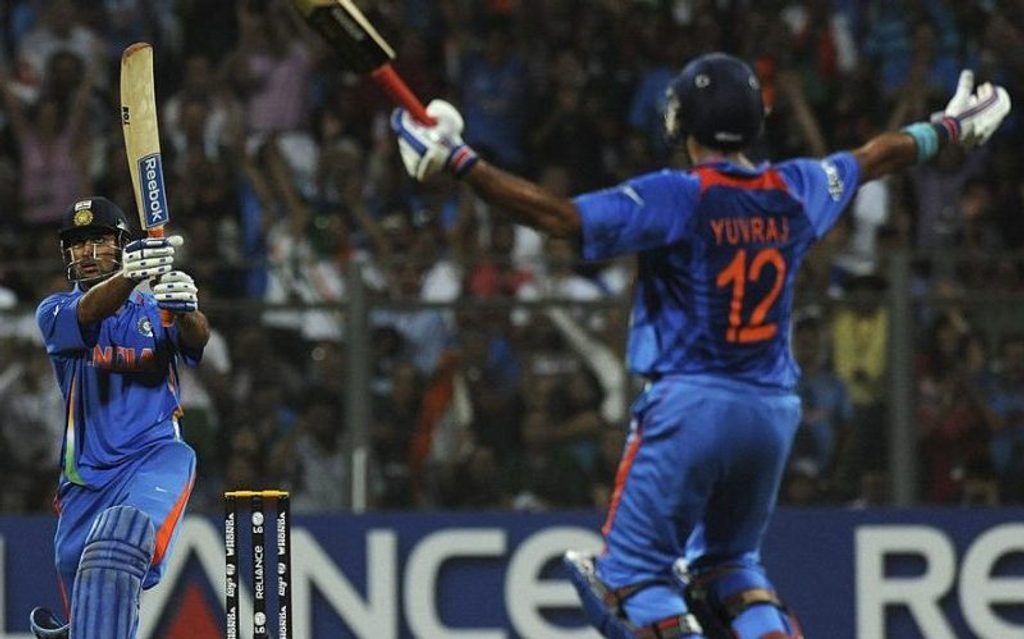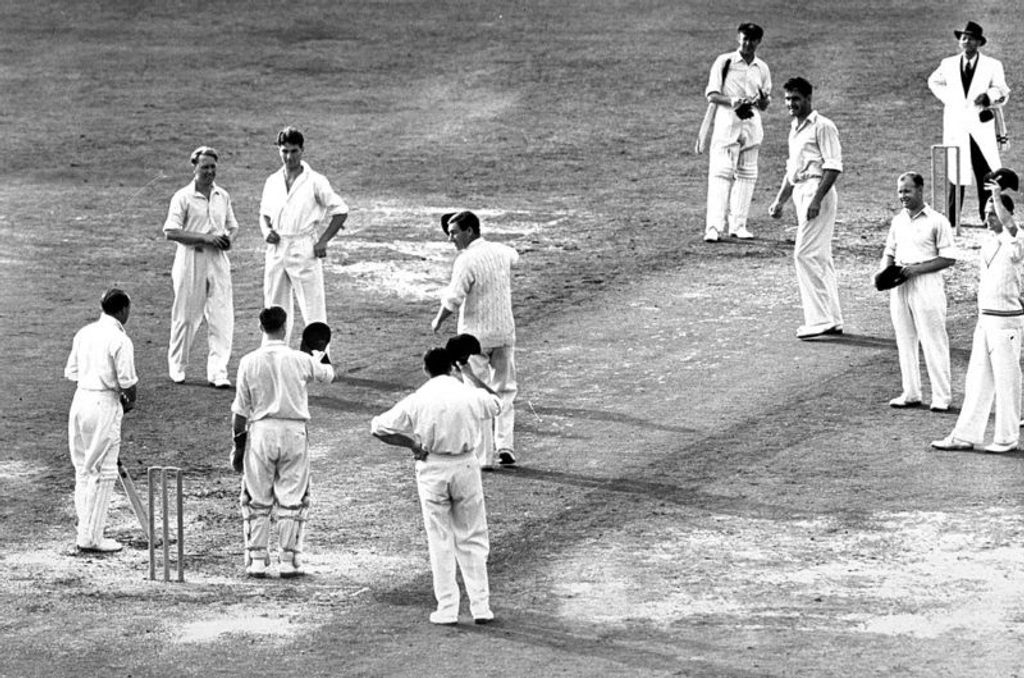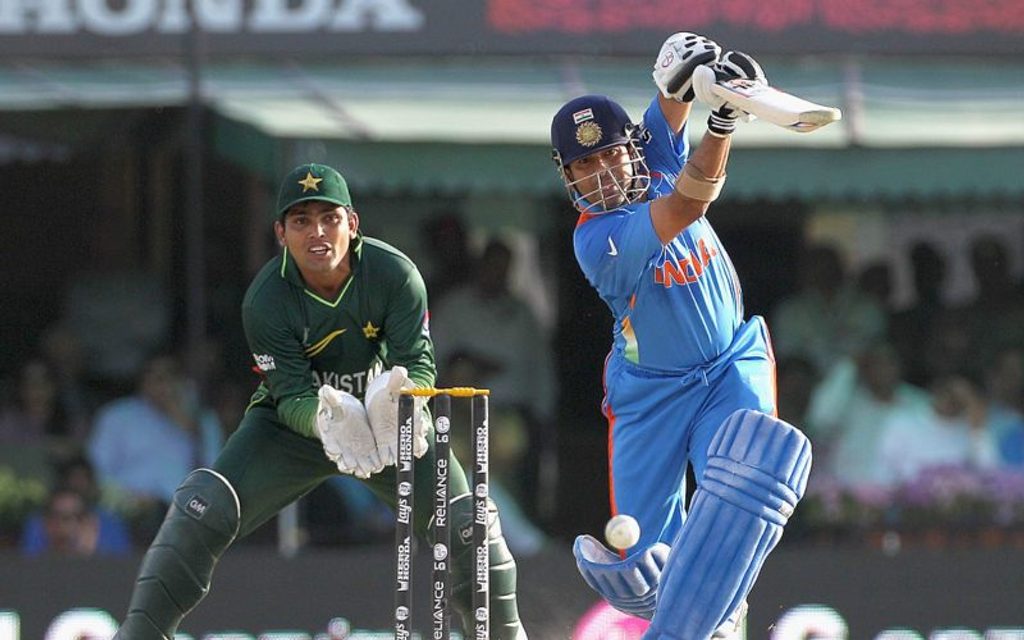
In issue two of The Nightwatchman, Andy Zaltzman reaches deep into Statsguru to explore the myths and legends of the nervous 90s and unearths some facts that might just shake conventional wisdom to its very core.
This article appears in issue two of The Nightwatchman. Available in print and digital editions.
The Nightwatchman is Wisden’s quarterly. Combining brilliant writing and beautiful design, it is the perfect gift for cricket fans. Take a look at our products and subscription options and for a limited period get 10% off by entering the coupon code NY10 at the checkout*.
*Offer excludes postage and packaging and rolling subscriptions.
Few moments in sport wed success and failure in an awkwardly resentful marriage of inconvenience quite like a batsman being out in the 90s. In terms of utility to his team, he has been only fractionally less effective than a batsman who is out for 100. This fact is seldom, if ever, transferred to the batsman’s face, however, as he trudges back to the pavilion, looking as elated as a child who has just been given an unwashed potato for Christmas, chuntering at the injustice of the universe, cursing the fact that human beings irritatingly evolved with ten digits on their hands and thus developed a decimal system of counting, and considerably more disappointed than if he had been out in the 80s.
The personal milestone achieved within a team game is one of cricket’s distinctive charms, with few if any parallels in any other sport, and the transition from a two-figure to a three-figure score is cricket’s signature individual triumph. It carves an immutable notch in a player’s history and, at the highest level, an eternal legacy in the annals of the game. Proximity to these slivers of immortality has prompted even some of the game’s doughtiest competitors, and those for whom success has become habitual, to creak, falter, and temporarily lose control of their finely-honed cricketing faculties. No other decade of runs has been honoured with its own honorific. ‘The Nervous Nineties’ has its own Wikipedia page.
My earliest cricket-watching memories are from the 1981 Ashes, one of sport’s masterpiece dramas, which left my six-year-old brain infected with a lifelong love of cricket, and a lifelong suspicion of everything else. Amid the celebrated glories of The Summer Of Tavaré, when “Botham and Willis laid useful foundations for the Beethoven Of Block to stodge England to glorious triumph” (The Kentish Society For Historical Revisionism 1982 Fun-Packed Annual For Kids), another recollection stands out – the agonised, almost constipated progress of Australian debutant Dirk Wellham towards a century in the final Test.
Most of my memories of that series have been augmented (or perhaps even created) by frequent viewings of the BBC’s Botham’s Ashes video during my wild teenage years and rebellious student phase. Wellham’s painstaking personal pilgrimage towards centennial nirvana features in few highlights packages, even fewer documentary movies, and zero online dating profiles, so I can only assume that it is an original imprint on my brain, an indelible mental relic of the first time I saw a batsman struggle with the curious psychological burden of adding a permanent statistical marker to an already successful performance.
He spent 25 minutes marooned on 99, in fading light, during which time he was dropped, poked around fretfully and, after what had been a mostly fluent innings, batted like a condemned man apprehensively waiting to hear the result of a final plea for clemency to a notoriously unsympathetic judge. Finally, he hit a four. And was out two balls later. Perhaps he knew the magnitude of his moment. He played just five more Tests, and never again came within 60 runs of scoring another hundred. But he can forever graffiti the words “Dirk Wellham – Test Centurion” on his garden shed in an aggressively baggy shade of green.
Even batsmen famed for their self-control and calmness under pressure can mentally implode at the prospect of a century. MS Dhoni has led his country to a World Cup victory on home soil, fulfilling the oppressive expectations of cricket’s most populous nation, batting with liquid nitrogen in his veins and an abacus in his head. He has proved himself one of the most psychologically immovable finishers of one-day chases, and generally exudes an aura of almost ethereal calm, as if aware that he is probably being watched by a billboard with a 30-foot-high picture of his own face on it.
In the soul-sappingly, cricket-hatingly tedious Nagpur Test last December, Dhoni was playing one of the most restrained innings of his career. England’s bowlers were exhausted, at the end of a day of toil in which they had extracted just two wickets on a pitch so lifeless it could have been found wrapped in bandages inside an ostentatiously giant pyramid. There was no pressure from the match situation – a draw was almost inevitable even on the third day.
 Indian captain M.S Dhoni hits the six that won his team the 2011 World Cup Final
Indian captain M.S Dhoni hits the six that won his team the 2011 World Cup Final
Dhoni reached 99. He promptly hit the ball straight to mid-off, scampered off for a high-speed, high-risk attempted single, and became the 15th man to be run out for 99 in a Test. The Ice Man, who had withstood the heat of a billion people thirsting for success in the World Cup final with the apparent ease of a man buying a baguette in a boulangerie, melted at the prospect of an essentially meaningless personal milestone.
However, despite numerous similar instances of batsmen cracking under what amounts to voluntary numerical pressure, the statistics reveal that the Nervous Nineties, batting’s supposed Bermuda Triangle, are, in technical parlance, “all mouth and not quite as much trouser as you might expect”.
One hundred and thirty-five years of Test cricket, involving more than 73,000 innings, suggest that a batsman is less likely to be dismissed in the 90s than at any other stage of his innings below the 150s. Forty-two years and almost 60,000 innings in one-day international cricket support these findings. Loudly, and with strongly worded placards. Strap in. Put your waterproofs on. I have been communing with Statsguru to a frankly unhealthy level. Here comes a deluge of stats.
Over the course of Test history, 38.3% of all innings have ended with the batsman being out in single figures. This excludes those innings which ended with the batsman not out for a single-figure score, on the grounds that we will never know whether or not he would in fact have been out in single figures.
By the same calculation process, a Test batsman reaching double figures has a 27.5% likelihood of being out for a score from 10 to 19; the likelihood of being out in the 20s is 24.3%; in the 30s, it is 22.8%; in the 40s, 21.9%; in the 50s, 21.4%; in the 60s, 21.5%; and in the 70s, 20.6%.
The pattern emerging, as you would probably have anticipated, shows that as batsmen play themselves in, the percentage of players out in each ‘decade’ of runs declines, then plateaus. After minimal change in the rate of dismissals from the 30s to the 70s, however, there is now a pronounced shift. Batsmen reaching 80 have an 18.2% likelihood of being out in the 80s. And batsmen reaching the supposedly Nervous Nineties have a 17.6% chance of being out before reaching their century.
Then, once their individual triumph has been successfully achieved, and with the honour board painter still limbering up for some precision lettering, it appears that batsmen relax – 20.8% of centurions are out between 100 and 109 inclusive. A Test batsman is thus 18% more likely to be out just after scoring a century than just before.
(This is not confined to cricket. 18% more mountaineers fall down a mountain whilst celebrating reaching the summit than whilst scrambling up the final few metres. That is a lie, but the point stands.) (Furthermore, a batsman is 19% more likely to be out for exactly 100 than he is to be out for 99.) (Even furthermore, a batsman is 17% more likely to be out for 50 than 49, so the milestone relaxation phenomenon is apparent even when a mere half-century is the prize.) (Furthestmore, a player is 20% more likely to be out for 150 than 149.)
The post-centurial slump continues – the dismissal likelihood in the 110s is 21.4% – before players seem to refocus and set their sights towards a higher peak. The probability of being out in the 120s is 19.1%; in the 130s, 17.8%; in the 140s, 18.1%; in the 150s – the first decade of runs in which a batsman is less likely to be out than the 90s – 17.1%; in the 160s, 19.5%; and in the 170s, 17.1%.
 Joe Root celebrates with Ollie Pope after reaching his double century the second Test match between New Zealand and England in Hamilton, 2019
Joe Root celebrates with Ollie Pope after reaching his double century the second Test match between New Zealand and England in Hamilton, 2019
Then, as the batsman approaches the rarefied heights of a double century, a familiar pattern emerges. The dismissal probability in the 180s falls to just 15.0%, and in the 190s it is 16.1%. The looming glory of a personally significant milestone has again focused the mind, and apparently reduced the chance of failure. Once this second major achievement has been inked into the history books, batsmen relax again – 23.7% of double centurions are out for less than 210.
Obviously, the dismissal rates for low scores are skewed by tailenders being much more likely to be out early in their innings, but there is an identical pattern when only the performances of top six batsmen are under consideration.
By decade of runs, the dismissal probability of top six Test batsmen from 0 to 89 is as follows.
Single figures: 30.4%. From 10 to 19: 23.4%. The 20s: 21.6%. The 30s: 20.8%. The 40s: 20.6%. The 50s: 20.1%. The 60s: 20.6%. The 70s: 19.7%. And in the 80s: 17.8%. The Nervous Nineties, it is 16.9%.
Then, from 100 to 109: 20.5%. From 110 to 119: 20.9%. The 120s: 18.4%. The 130s: 17.3%. The 140s: 18.0%. The 150s: 16.9%. The 160s: 18.9%. The 170s: 17.0%. The 180s, it is 14.8%, and in the 190s, 16.4%. From 200 to 209, it is 23.7%.
In ODIs, the lure of the century seems to have an even greater motivational impact. The Nervous Nineties are comfortably the ‘safest’ decade of runs for ODI batsmen.
Again, by decade of runs, the dismissal probability of ODI single figures to the 80s:
Single figures: 37.4%. From 10 to 19: 28.1%. The 20s: 26.5%. The 30s: 25.8%. The 40s: 24.2%. The 50s:27.0%. The 60s: 26.9%. The 70s: 26.9%. The 80s: 27.3%. In the Apparently Nerveless Nineties, it is just 21.8%.
From 100 to 159 (after which there are insufficient innings for the figure to be relevant) (all relevance being relative, within the context of complete irrelevance), the figures are: from 100 to 109: 33.4%. From 110 to 119: 34.6%. The 120s: 32.6%. The 130s: 27.7%. The 140s: 34.9%. The 150s: 35.6%.
The increase in likelihood of dismissal after reaching a century in one-day cricket is thus significantly higher. ODI batsmen are more than 50% more likely to be out between 100 and 109 inclusive, than in the 90s.
(I would have done the calculations for top six ODI batsmen only, but I have two children who no longer recognise me. Physically or spiritually.)
None of this necessarily proves that the Nervous Nineties are fabrication, foisted onto the cricketing world by multinational pharmaceutical corporations to sell overpriced anxiety-calming medication to batsmen approaching moments of personal triumph.
What it does suggest, however, is that if batsmen do become nervous in the 90s, it generally serves to make them less likely to be dismissed. Their minds are concentrated, their defences stiffened. And it suggests that, whilst cricket is a team game, individuals are (a) individual, and (b) not idiots. There is a time and a place for personal milestones. And that time and place is whenever and wherever a batsman is near that milestone. And, if a coach can find a way of replicating the tension of the 90s throughout a batsman’s innings, his team will become unbeatable – maybe the ever-expanding squadrons of 12th men who litter the modern game can start conveying overtly threatening messages to the batsmen as well as drinks and unnecessary gloves.
There is an exception to the reduced likelihood of dismissal in the 90s. When a batsman is attempting his 100th run, he suddenly seems to possess the psyche of a quivering circus child on its first day in the human catapult. Perhaps the truest manifestation of the nerves that afflict an elite cricketer when within sniffing distance of a century is in the extraordinary proportion of those dismissed for 99 who are run out.
Overall, 3.5% of all batsmen have their innings curtailed by a run out, and slope off in a fug of resentment at one or more of their partner, themselves, a fielder’s inhumanly strong arm, an errantly placed banana skin, or their parents for not providing them with the natural speed to make it to the safety of the crease, after being run out. Of the 81 batsmen out for 99 in Tests, however, 15 have been run out – 18.5%. So a Test batsman is approximately five times more likely to be run out when he is on 99 than when on another less nerve-jangling score.
However, batsmen are apparently more careful than usual between the wickets as they approach a century. Of the 129 batsmen out for 97 and 98, only two have been run out. Thus, a player is 12 times as likely to be run out for 99 as for 97 or 98.
In fact, more batsmen have been run out for 99 than for any other score above – any guesses, milestones fans? – 49. Seventeen players have been run out for 49 – 6.2% of all dismissals for 49 have been run out, compared with 4.0% of all dismissals for other scores between 40 and 59.
It is only in the running between the wickets, however, that the nerves of 99 manifest themselves. If you exclude those 15 run outs, 99 is the fourth least likely score for a batsman to be dismissed between 90 and 109 (only 94, 95 and 98 provide a lower likelihood of a non-run-out dismissal). Even including the run outs, a player is less likely to be out for 99 than for any score from 100 to 105.
 Sir Donald Bradman in action in his last innings during the 1948 Ashes Test at the Oval
Sir Donald Bradman in action in his last innings during the 1948 Ashes Test at the Oval
The player most associated with a near-miss in the 90s is the greatest batsman of all (with all due respect to Chris Tavaré), Don Bradman. The Don finished his Test career with the immortal, untouchable Test average of 99.94, after a duck in his final innings (somewhat invalidating the theory that you are only as good as your last innings).
Bradman was otherwise completely impervious to the threat of the 90s in Tests. He reached 90 in an astonishing 29 of his 80 Test innings. He reached 100 in an even more astonishing 29 of his 80 Test innings. Unsurprisingly, this is by some distance a record for the most 90s successfully negotiated in a Test career.
Bradman’s extraordinary ability not to be out in the 90s – surpassing even his extraordinary ability not to be out at most other stages of an innings – is further illustrated by the fact that of the 137 players who have reached 90 on 10 or more occasions in Tests, only five others have never sampled the bitter juice of pre-centurial failure squirting into their tearful eyes – Greg Chappell (24 hundreds), Michael Vaughan (18), Ian Botham (14), Ijaz Ahmed and Polly Umrigar (both 12).
However, not only did the Don end with an average fractionally below 100, but he was also triggered by the Great Umpire In the Sky at the age of 92. The Nervous Nineties conquered Bradman only with the assistance of two of the most formidable accomplices – mathematics and The Reaper.
Others have proved more fallible, including the man who did more than anything to popularise the Nervous Nineties, the turn-of-the-20th-century Australian legend Clem Hill, who was the first man to score 96, 97, 98 and 99 in Tests (the last three, in reverse order, in successive innings in two Tests in January 1902). He was also the first man to be out in the 190s. Almost 100 years later, his Baggy Green descendant Michael Slater fell an almost heroic nine times in the 90s, out of 23 attempts to negotiate them, including five times when attempting the shot that would have brought him his century.
The player most often compared to Bradman, Sachin Tendulkar, has been out in the 90s 27 times in all international cricket, out of 127 scores of 90-plus (excluding his one not out innings in the 90s). The Mumbai Magician’s 90s-failure rate is 13% above the average, and his year-long struggle to score his 100th international 100 was the most elongated example of a Nervous Nineties, a 34-innings Odyssey that itself featured two dismissals within 10 of the landmark hundred.
 Sachin Tendulkar drives the ball during the 2011 World Cup Semi-Final against Pakistan
Sachin Tendulkar drives the ball during the 2011 World Cup Semi-Final against Pakistan
Further curiosities emerge. Nervous Nineties Curiosity #1: England’s batsmen have proved the second least likely to be out in the 90s (15.9%), behind only Sri Lanka’s (15.3%), with Australia lagging behind in fourth (17.6%). England’s bowlers, however, are most likely to dismiss an opposing batsman in the 90s – 19.4%. Australia misses out on the non-existent podium again, in fourth place, at 18.3%.
However, before England supporters break out the bunting in celebration of a rare triumph over their oldest cricketing enemy in a statistic covering more than the period 2009-2011, it should be pointed out that in Ashes Tests, Australians are less likely to fall in the 90s than Englishmen (16.3% to 17.8%), and that, while an Australian is 12% less likely to narrowly miss out on a hundred against England than against other opponents, an English player is 18% more likely to be out in the 90s against Australia than when facing a less baggy green adversary.
Before the First World War, however, Australians were 33% more likely than English batsmen to be out in the 90s in an Anglo-Australian Test; since then, they have been 16% less likely to do so.
Conclusion: England’s eternal gratitude for the assistance of the Australians in the Great War manifests itself in its cricketers allowing Australians to score Ashes centuries, and in not wishing to inflict their own personal triumphs on their valued allies.
Nervous Nineties Curiosity #2: Number 1 batsmen have a 14.8% dismissal probability in the 90s; their opening partners, who are evidently too scared to face first ball, further display their uncertainty by having a 22.0% Nervous Nineties failure rate. Numbers 3, 4 and 5 are all between 15% and 16%.
Conclusion: Number 2 batsmen are natural-born cowards, and should be dropped in favour of playing two number 1s. Logistics permitting.
Nervous Nineties Curiosity #3: Teams win 34.8% of Tests in which a player is out in the 90s; but 38.8% of Tests in which a player is out in the 80s; and 40.1% when a batsman is out between 100 and 109.
Conclusion: Seeing a teammate dismissed in the 90s is psychologically devastating. Coaches should instruct batsmen to smash their wickets to pieces as soon as they reach 85.
Nervous Nineties Curiosity #4: Batsmen aged 26 and under have a 19.3% probability of being out in the 90s; players aged 27 and over have a 16.8% chance of doing so, but a 29-year-old batsman is 25% more likely to fall in the 90s than a 28-year-old and 16% more likely than a 30-year-old.
Conclusion: Batsmen suffer a nervous angst at the impending onset of what will almost certainly prove to be their final decade of Test cricket. A growing sense of one’s own mortality is unhelpful when attempting to complete a century.
(On possibly related topics: batsmen are more likely to be out for 13 than for any other score over eight. Australian batsmen are 24% less likely to be out for 87 than players from other countries combined.)
How can the wider world use this knowledge? Perhaps these statistics suggest that, while the motivation of succeeding within a collective is strong, the human craves personal triumph and recognition as well – something Lenin might like to consider next time he is establishing a Communist empire. Perhaps they suggest that, when approaching an achievement that will provoke an outpouring of public acclamation, the human brain finds greater focus and resolution.
If surprise Middle East peace broker Tony Blair provides cricket bats for the leaders of the rival parties, and tells them that a large crowd is waiting outside to see them wave those bats in triumph once they have finally hammered out a lasting solution to the crisis, the millennia of disagreement will melt faster than a dead zebra’s ice cream. Perhaps they will prompt the economic world to realise that traditional assumptions about numbers are not necessarily correct, and help prevent the planet banging its financial head through the same plate glass window over and over again in future.
Ultimately, that is for the likes of the ICC, the United Nations, the World Bank, Simon Cowell, Amnesty International, the Bilderberg Group and Ravi Shastri to decide. But if the world can find a way of making billions of pounds out of mobile phone ring tones, it should find some use for the fact that the 90s are an international batsman’s safest statistical haven.
“Statistics are like a ventriloquist’s dummy. Shove your hand far enough up them, and you can make them say whatever you like. Although only children and idiots will take any notice.” Aristotle, Drunken Ramblings, Vol.2, 334 BC.
“What do they know of cricket who only cricket know? Statistics.” CLR James’ Big Fat Cricket Quiz, 1963.
[All statistics correct to the end of March 2013. No arguments.]








